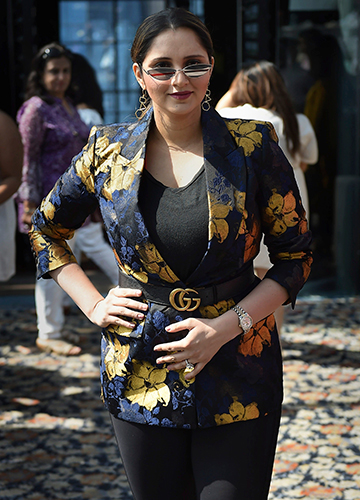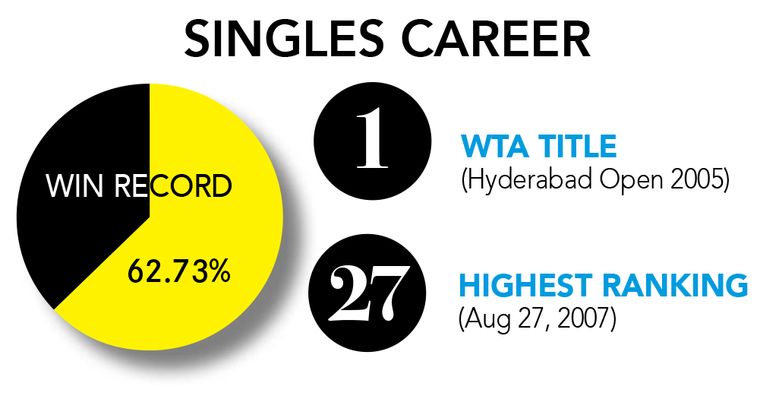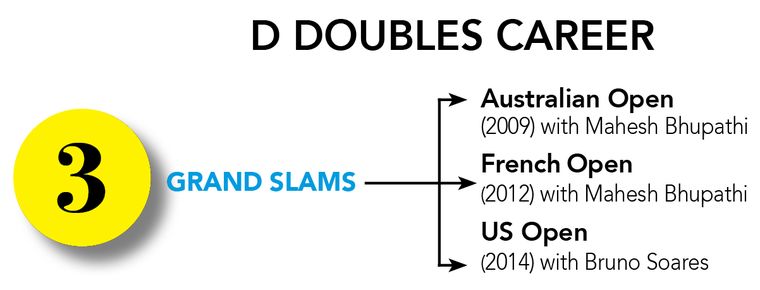Enrico Piperno still remembers his first “sighting” of Sania Mirza. “She was 14 years old when I first saw her in a tournament,” said the former national champion and the 1982 Asian Games silver medallist. “Her forehand was very powerful. When I met Leander Paes and Mahesh Bhupathi soon after, I told them, ‘That 14-year-old has a stronger and better forehand than you guys!’ They didn’t believe me, until Mahesh met her and watched her play.”
Over the next few years, Mirza played almost exclusively on the International Tennis Federation circuit, claiming 12 singles titles. In 2003, she won the Wimbledon junior doubles title with Russian Alisa Kleybanova. Mirza’s arrival on the scene after Nirupama Sanjeev—ranked 134 in 1997—put India on the international tennis map like never before. She became the first Indian player to breach the top 30 in world rankings in August 2007, when she became world number 27.
READ INTERVIEW: Could have broken into top 15, but for injuries, says Sania Mirza
Mirza, 35 now, has long been carrying the tricolour, and the burden of expectations and pressure that comes with it, with quiet aplomb. She has let her racket do most of the talking, along with T-shirts with messages on them like “You can either agree with me—or be wrong” and “Well-behaved girls don’t make history”. Fearless, proud and oozing self confidence, she could hold her own against the best in the world. Once, after losing to Maria Sharapova in the US Open, she sported a T-shirt that said, “Don’t get in my way.”
She has won six Grand Slams, multiple Asian Games and Commonwealth Games medals, and reached the peak of the WTA doubles ranking. A role model, wife and loving mother, Mirza recently announced that the 2022 season would be her last. “I have always said that I will play until I enjoy the grind, the process which I am not sure I am enjoying as much anymore,” she said.
Mirza has had a long journey; she began playing tennis when she was just six. Her parents, Imran and Naseema, have been the force that has been driving her to realise her dreams. “The reason why Sania could achieve so much is because of the support of her family—her parents and sister Anam,” said Piperno. “They have been with her from the beginning.”
Imran said whatever they had done for their daughter came from their shared passion for tennis. “We never thought we were sacrificing anything,” he told THE WEEK. “Every match or tournament she played or won—even an under-10 competition—we were happy for her. Now that she has decided to retire, we are happy, too. She has handled herself—her professional and personal lives—well. She now wants to focus on her family and other stuff. We are supporting her there, too.”
Bhupathi, who has been Mirza’s guide, manager and mixed doubles partner, said she leaves a high benchmark for those who want to follow in her footsteps. “She had all the qualities to become a sports superstar. She is bound to leave a very large void when she retires,” he said.
According to Bhupathi, it was her fighting spirit that stood out in her game. “The first Grand slam final we played together and lost was the Australian Open in 2008,” he said. “She was injured pretty badly, she was heavily strapped, but she put up a hard fight till the very end.”
Bhupathi said Mirza had an ability to “pull the trigger when needed” in a match. “She would come on court and go for her shots; usually players would wait for an opening. She would use her forehand to create amazing damage,” he said.
Mirza set high standards off the court as well. In the run-up to the 2012 London Olympics, when Bhupathi and Paes clashed over who would partner with her in mixed doubles, Mirza came down heavily on both the icons. She was angered by the fact that the All India Tennis Association had paired her with Paes to ensure his participation in the Olympics.
“As an Indian woman belonging to the 21st century, what I find disillusioning is the humiliating manner in which I was put up as a bait to try and pacify one of the disgruntled stalwarts of Indian tennis,” she said. “While I feel honoured and privileged to have been chosen to partner Paes, the manner and timing of the announcement reek of male chauvinism where a Grand Slam champion, who has been India’s No1 women’s tennis player for almost a decade in singles and doubles, is offered in compensation to partner one of the feuding champions purely in order to lure him into accepting to play with a men’s player he does not wish to play with!”
In 2010, when her decision to marry Pakistani cricketer Shoaib Malik sparked a media frenzy, she remained silent and determined. With her poise, she helped her family weather the public glare and scrutiny. Her recent decision to retire owes a lot to the fact that she dotes on her three-year-old son. “I am putting my son at risk by travelling so much with him; that’s something that I have to take into account,” she said.
Will India get another Sania Mirza soon? “It will take a miracle!” said Bhupathi. “There is no system or structure in our country to produce champions. Hopefully, somebody may fall from the sky; till then, we shall keep looking.”





